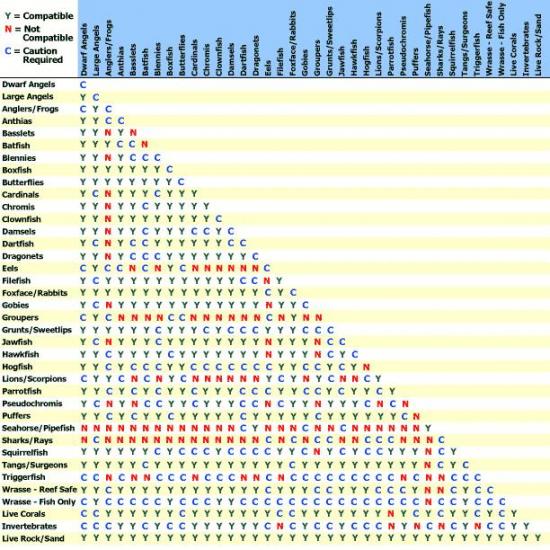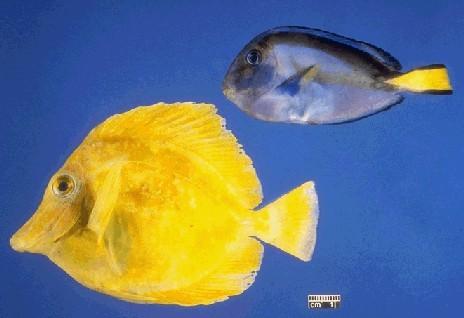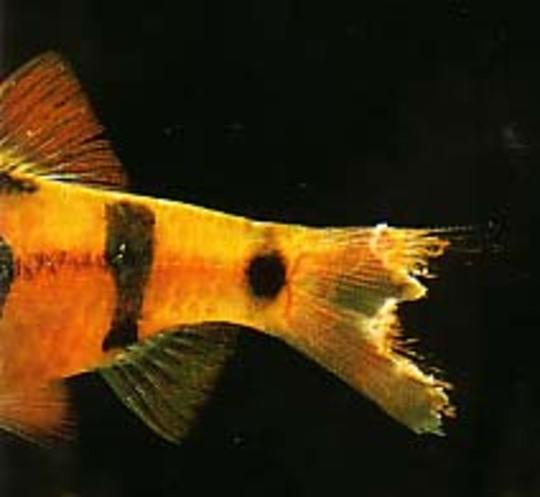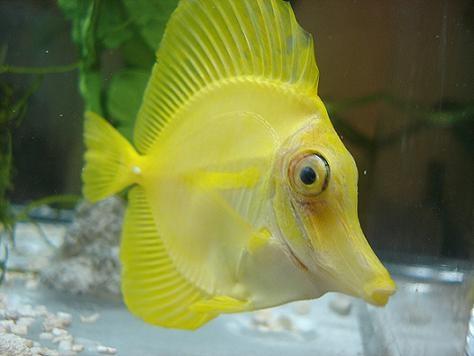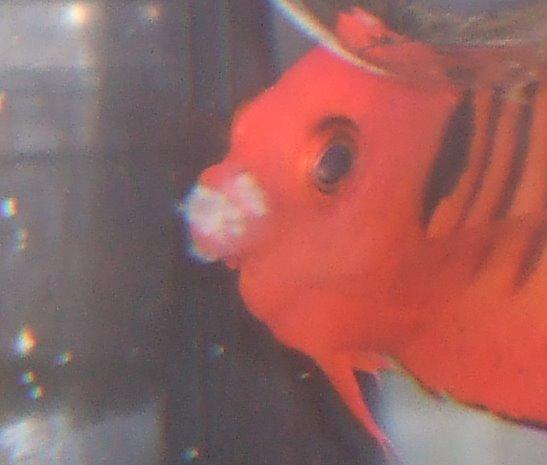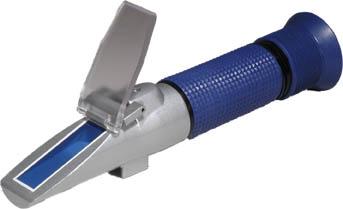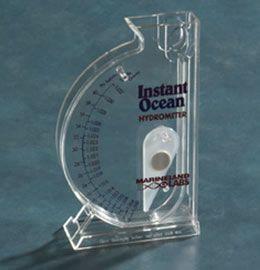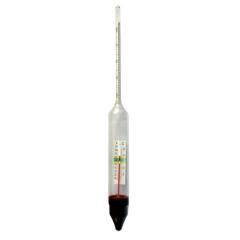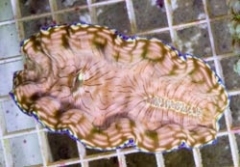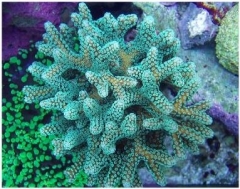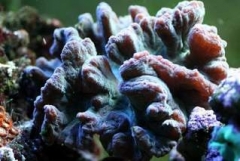-
Posts
8,253 -
Joined
-
Last visited
-
Days Won
31
Content Type
Profiles
Forums
Gallery
Everything posted by Harlequinmania
-
Billfish and tuna, important commercial and recreational fish species, may be more vulnerable to fishing pressure because of shrinking habitat, according to a new study. An expanding zone of low oxygen, known as a hypoxic zone, in the Atlantic Ocean is encroaching upon these species' preferred oxygen-abundant habitat, forcing them into shallower waters where they are more likely to be caught. View the full article
-
Billfish and tuna, important commercial and recreational fish species, may be more vulnerable to fishing pressure because of shrinking habitat, according to a new study. An expanding zone of low oxygen, known as a hypoxic zone, in the Atlantic Ocean is encroaching upon these species' preferred oxygen-abundant habitat, forcing them into shallower waters where they are more likely to be caught. View the full article
-
To survive in a tumultuous environment, sea urchins literally eat through stone, using their teeth to carve out nooks where the spiny creatures hide from predators and protect themselves from the crashing surf on the rocky shores and tide pools where they live. The rock-boring behavior is astonishing, scientists agree, but what is truly remarkable is that, despite constant grinding and scraping on stone, urchin teeth never, ever get dull. The secret of their ever-sharp qualities has puzzled scientists for decades, but now a new report by scientists has peeled back the toothy mystery. View the full article
-
A neurobiologist, an artist, and a composer recently presented their collaborative "singing electric fish" installation to thousands of people attending the STRP Festival, one of the largest art and technology festival venues in Europe. Many visitors had the chance to grab a baton and direct the unusual choir. View the full article
-
Great to see you starting a new tank thread , camping here for your updates ..
-
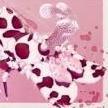
Newbie Guide to setting up a Marine Tank
Harlequinmania replied to Harlequinmania's topic in New to the Marine Aquaria Hobby
Aquarium Maintenance Regular maintenance is an ongoing responsibility that no self-respecting aquarist should shirk. Over the long term, your consistent effort will be rewarded with a healthy aquarium that's resilient to outbreak of diseases and beautiful tank. Below are some of the recommendation to your tank maintain The Daily regimen Feeding While it may be true that most fish don't need 3 meals a day ( Some might even go without food for days), the recommendation is to feed them two small meals over the course of the day, once in the morning and once in the evening ect. If twice a day feeding routine is not feasible because of work commitments or other reasons, once a day would be fine too. As a rough guide, feed an amount that the entire tank population can consume in two to three min will be just enough. Overfeeding will leads to uneaten food, which in turn will pollute your water and may result in other problem like stress and diseases to your live stocks. Observing Take some time to observe your fish every day. This is the precious window during which you can detect problems early. Watch carefully for abnormal behavioral or signs of illness which show poor water condition. Watch your fish while you eat, to see if your fishes are acting normally to it;s daily diet. Other Check and clean your skimmer cup if the skimmate is full. Top up the evaporate water in your tank with 'treated fresh water" i.e RO/DI water or least water treated with anti chlorine. Dosing of addictive which is required i.e ;trace element, vitman C, Ca,Mg, ect.. The weekly stuff Once a week, do a partial water change of between 10% ~ 15% of the total tank volume. Such regular change help to keep ammonia and nitrite , nitrate , Phosphate low, and renew the water's supply of trace elements, ca, mg and other minerals in the water. Testing your water parameter weekly will also help to determine how much water your need to change and the supplement you need to add into your tank. Check and clean your skimmer weekly to maintain the performance of your equipment, and clean your tank glass of any algae. Once a month If you have a gravel substrate, vacuum it thoroughly every month. Vacuuming helps to remove waste and debris that have accumulated on the tank bed, and also help to remove potentially harmful pocket of gasses that may have built in the substrate over time. If time allow, dismantled and clean your pump and wave maker to prevent calcium deposit being build up ,and to maintain your equipment in tip top operating condition. -

Newbie Guide to setting up a Marine Tank
Harlequinmania replied to Harlequinmania's topic in New to the Marine Aquaria Hobby
Fish Compatibility Once you have done your aqua scaping , cycled the tank for a couple of weeks, and are now ready to populate it with fish and corals. However before buying any fish or corals which pleases your eyes, please do some research and study on the compatibility of the types of marine fish and types of corals you are buying as these marine creature vary in their need for companionship and living ! Populating your aquarium is not exactly a straightforward matter. you could simply dump all and sundry into the tank, then hope those fishes will behave well with each other. But more often than not, you will see fish nipping at your corals or fighting at each other or sulking in a corner of your tank. Fish vary in their need for companionship, and some do well with company; other can be downright anti-social. It is thus very important to select the right mix of fishes for your aquarium. Feeding habits can also cause problems, bearing in mind that carnivores may attack other fishes, so if you have one in the tank, the other fish must be at least of the same size or larger, or else the little ones may end up as food. Source : thereefshop -

Newbie Guide to setting up a Marine Tank
Harlequinmania replied to Harlequinmania's topic in New to the Marine Aquaria Hobby
Selection of Live stocks Most marine fishes in the trade are collected in the wild, and undergo various ship / plane and cars transportation before reaching our local LFS. The largest portions of mortalities can occur during post shipment, related to the stress of transport and handling, and due mainly to osmotic dysfunction, impaired immune function and stress mediated disease. Often many hobbyist encounter fish not eating , diseases and eventually dead within one week of purchase into their own aquarium and some eventually gave up the hobby thinking that this hobby is difficult without knowing the real cause of the death. However with some simple check and observation during your next purchase, this will greatly reduce the causality rate of your new fish . Below are some tell tale sign in the fish appearance and behavior to look out for in a healthy specimen when you make your selection of fish during your next LFS visit. Eyes The eyes should always be bright and clear and normally set in the head, Bacterial infections may slowly show up as grey cloudy film or light misty appearance over the eye. Fish with sunken eyes, that look to small for the socket is not a good sign and normally show signs of poisoning. Mouth There should be no evidence of injury around the mouth, an injury around this area has the potential for the saltwater fish to not eat and may cause fungus or bacterial infections. Fins The fins should have good shape with no rough or jagged edges. Signs of poor fins is fayed or ratted which can be a tell tale sign of ammonia burn from collecting and poor water quality or just fighting with other fishes, again this can lead to bacterial infection of other fish diseases. Skin & Scales The skin and scales should be smooth and well colored. Indistinct, discolored blotches on the upper sides are usually a sign of an internal disease, especially if associated with rapid breathing. Uplifted, raised or missing scales are also a bad sign. Abdomen (Stomach) The abdomen or stomach should be well rounded and context in a healthy looking fish, when a fish starts to loose body mass the abdomen will become concave (sunken in) Feeding becomes an important part of the well being of any fish and if eating well should allow to get over fish stress and other minor issues. Selection of Corals Corals in the trade are mostly hand picked from the ocean, and knowing how to choose a good pcs of coral for your marine tank will help you build a healthy and vibrant aquarium. Selection of a reputable LFS which has a good reputation which take good care of its fish and corals is a good place to start with. Notice the condition of the tanks in their shop and their livestocks, and they should be clean with clear water, and the fish and corals should appear healthy as well. Before buying, consider which type of coral you want to buy for your tank, as your tank conditions will limit your choice due to your fish, equipment and lighting ect. Some corals need different amounts of light and water flow and also have different feeding requirements ect. Do some research or ask the LFS before you buy. Look for coral that open and fully extended. A closed coral may just be stressed, or it can also be a sign that it isn't healthy or that there are bad conditions in the tank water.If you can afford it, get a prophylactic treatment dip for your corals before bringing it into your aquarium . All corals are very fragile, and make sure to handle the coral very carefully once you've chosen a coral to purchase. Corals transfer best when they're mounted on something, usually a small piece of live rock,so if the coral isn't mounted, you should mount it yourself with either epoxy or gel before you place it in your tank. -
Hydrometer A Simple instrument used to determine specific gravity, in a sealed, graduated tube, weighted at one end, that sinks in a fluid to a depth used as a measure of the fluid's specific gravity. Refractometer A Refractometer is a simple and easy way ofaccurately measuring the specific gravity (salinity) within your aquarium and should be used by serious marine aquarist to get the most accurate reading of salt levels in their saltwater aquarium. The refractometer works on the principle of refraction of light todetermine the salinity and is very accurate but also very simple and robust,unlike good quality glass hydrometers which are easily broken. Light enters the instrument at one end and passes through a sampleof the aquarium water which causes it to be refracted, (bends the light),depending on the salinity of the water. The refracted light is reflected off ascale inside and can be viewed through an eyepiece on the opposite end of theinstrument.
-
A study of sea-level trends brings both good and bad news to localities concerned with coastal inundation and flooding along the shores of Chesapeake Bay. Dr. John Boon, the study's lead author, says the good news is that "absolute sea level in Chesapeake Bay is rising only about half as fast as the global average rise rate." The bad news, says Boon, is that "local subsidence more than makes up for it." View the full article
-
Increasing acidity in the sea's waters may fundamentally change how nitrogen is cycled in them, say marine scientists. Nitrogen is one of the most important nutrients in the oceans. All organisms, from tiny microbes to blue whales, use nitrogen to make proteins and other important compounds. View the full article
-
Carbon will not remove bacteria in the water, but harmful waste and chemical ect..
-
Care Level: Moderate Reef Compatible: Yes Lighting: Moderate Waterflow: Medium Placement: Bottom, Middle Water Conditions: 72-78° F, dKH 8-12, pH 8.1-8.4, sg 1.023-1.025 Color Form: Blue, Brown, Green, Yellow Diet: Filter Feeder Supplements: Calcium, Magnesium, Strontium, Trace Elements Origin: Cook Islands Family: Tridacnidae Tridacna derasa is also referred to as the Southern Giant Clam or Smooth Giant Clam, and is the second largest of all the Tridacna spp., reaching a size of 24" in the wild. Unlike most other Tridacna spp. that have a large byssal opening, Derasa Clams have a narrow gap on the underside of their thick, smooth shell. They can easily be confused with their close relative Tridacna gigas, especially when they are very small in size. T. derasa can be identified by having six to seven vertical folds in their shell which they can close completely, where T. gigas has only four or five vertical folds, and is unable to completely close their hinged shell.Tridacna derasa have a broad range in the wild and are found in the Indo-Pacific, Central Pacific and South Pacific as well as the Coral Sea. They occupy outer reef habitats on both sandy and hard packed substrates, and can be found either solitary or in small aggregations at depths ranging from 10 to 60 feet. All Derasa Clams entering the aquarium trade are cultured in the Central Pacific and South Pacific Ocean. Although they can be found in a variety of colorations and patterns in the wild, the ones aquacultured for the aquarium trade are primarily gold, brown, orange, and yellow, with vibrant blue or green trim edging that surrounds the mantle. T. derasa will arrive unattached to any rock or substrate, and prefer to be placed in the sand or in a recess of a rock, as they do not attach as firmly to the substrate or rockwork like most other members of the genus. In the home aquarium, Derasa Clams require moderate to intense lighting to thrive as they contain the symbiotic algae called zooxanthellae, and receive the majority of their nutrition from the light through photosynthesis. Smaller T. derasathat are 2" or less in size are much more sensitive to very intense lighting as their membrane is much thinner than larger specimens. For this reason care should be taken to properly photo-adapt them to the existing reef aquarium lighting in a similar manner to newly introduced stony and soft corals. When adapting a new Derasa Clam to very intense lighting, it is ideal to set them on a small rock or in a plastic dish with coarse substrate at the bottom of the aquarium. Over time, the clam can then be slowly moved up higher in the aquarium. When maintained in the proper environment, smaller Derasa Clams can double or triple their size in less than a year. Tridacna clams are also filter feeders and constantly filter the water for small particulates. Derasa Clams larger than 2" do not require supplemental feedings, but smaller T. derasa that are less than 2" should be fed a Phytoplankton or greenwater supplement several times per week if maintained in a nutrient poor reef aquarium. Tridacna derasa are the hardiest and most adaptable of all the Tridacna spp., and require moderate to intense lighting and good water flow in the home aquarium. Proper water chemistry is very important, and they will thrive when calcium levels of 380- 450 mg/L, alkalinity level of 8-11 dKH, and magnesium level of 1280-1350 ppm are maintained. Content Courtesy: Liveaquaria
© www.sgreefclub.com
-

Guttatus Birdsnest Coral - (Seriatopora guttatus)
Harlequinmania posted a gallery image in Small Polyp Stony - SPS
Care Level: Moderate Temperament: Peaceful Lighting: High Waterflow: Medium to Strong Placement: Middle to Top Water Conditions: 72-78° F, dKH 8-12, pH 8.1-8.4, sg 1.023-1.025 Color Form: Green, Orange Supplements: Calcium, Magnesium, Strontium, Trace Elements Family: Pocilloporidae The Orange Guttatus Birdsnest Coral boasts a contrasting color combination that is simply breathtaking. The dynamic interplay between the rich orange coloration and neon teal polyps is exciting yet soothing, making the Orange Gutattus Birdnest Coral an aesthetically pleasing choice for any SPS collector. "Guttatus" is Latin for "speckled" and true to its description the speckled appearance of the polyps enhances the dramatic coloration and is the distinguishing feature of this species.The Orange Guttatus Birdsnest Coral, unlike most otherSeriatopora gutattus corals, have rounded tips and are very fast growing. It is a small polyp stony (SPS) coral with very delicate, thin branches. The Orange Guttatus Birdsnest Coral requires both moderate lighting and intermittent water current to maintain its bright color. For continued good health, it will also require the addition of calcium, strontium, and other trace elements to the water. The Orange Guttatus Birdsnest Coral will thrive in a variety of lighting conditions, ranging from compact fluorescents, VHO, T-5's up to the more intense metal halides. Alter their position in the aquarium depending on the lighting, and provide at least 3 watts per gallon using one of the lighting systems mentioned above. The Orange Guttatus Birdsnest Coral satisfies the majority of its nutritional requirements by means of photosynthetic, symbiotic zooxanthellae algae hosted within its body. While it may not require additional food to maintain its health in the reef aquarium, the Orange Guttatus Birdsnest Coral will feed on micro plankton or foods designed for filter feeding invertebrates. The Orange Guttatus Birdsnest Coral is mounted on a small fired ceramic block that can be placed easily and securely in or between the rockwork in the reef aquarium. Content Courtesy: Liveaquaria© www.sgreefclub.com
-

Spiny Cup Pectinia Coral (Pectinia sp.)
Harlequinmania posted a gallery image in Small Polyp Stony - SPS
Care Level: Difficult Temperament: Peaceful Lighting: Moderate Waterflow: Medium Placement: All Water Conditions: 72-78° F, dKH 8-12, pH 8.1-8.4, sg 1.023-1.025 Color Form: Blue, Green, Tan Supplements: Calcium, Strontium, Trace Elements Origin: Fiji, Indonesia Family: Pectiniidae he Pectinia Spiny Cup Coral is a SPS coral, also referred to as a Lettuce, Hibiscus, Palm, Carnation, or Cabbage Coral. They form cabbage-like colonies with ruffled branches that terminate in very sharp points. The coloration within these corals vary, and typically darken towards the center of the colony. They add a unique form and presence to a reef aquarium. Its behavior is peaceful and can be placed in close proximity to other peaceful-natured corals. The PectiniaLettuce Coral is not a coral for the novice reef keeper as it is moderately difficult to maintain. Its home will require medium lighting combined with a medium water movement. For continued good health, it will also require the addition of calcium, strontium, and other trace elements to the water. It will benefit from additional food in the form of micro-plankton or other foods designed for plankton feeding animals, and should be fed when its tiny tentacles are visible during the evening. Content Courtesy: Liveaquaria© www.sgreefclub.com
-
Rapid turnover and remodelling of lipid membranes could help phytoplankton cope with nutrient scarcity in the open ocean. View the full article
-
Good choice for the salt selection, and the sump design looks cool too !


